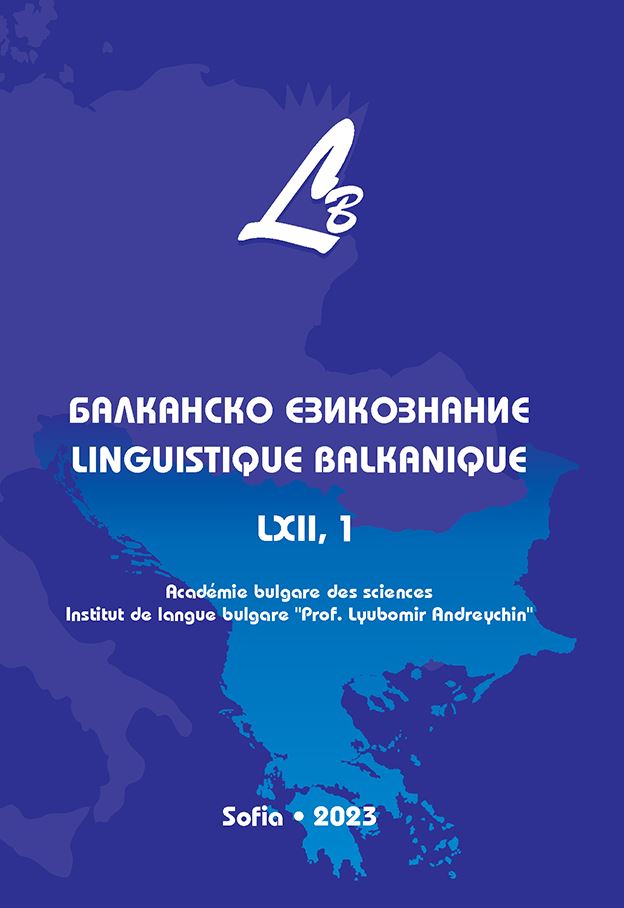Ancient Toponyms and Kin Names from the Western Outlands
Ancient Toponyms and Kin Names from the Western Outlands
Author(s): Anna Choleva-DimitrovaSubject(s): Language studies, Language and Literature Studies, Theoretical Linguistics, Lexis, Semantics, Historical Linguistics, South Slavic Languages
Published by: Институт за български език „Проф. Любомир Андрейчин“, Българска академия на науките
Keywords: toponyms; microtoponyms; anthroponyms; onymic system; kin names; Tsaribrod
Summary/Abstract: When we refer here to the Western Outlands, we mean areas now or formerly inhabited by ethnic Bulgarians but no longer within the borders of Bulgaria. After the Treaty of Neuilly in 1919, most settlements in the former Tsaribrod district remained outside of Bulgaria. The subject of the present study will be toponyms (place and water names) or microtoponyms from 34 settlements located in neighboring Serbia, formerly comprising the administrative region of Tsaribrod, which also included Pirot, and distributed today among various Serbian districts. The majority of the place names are taken from written sources. Conclusions are drawn based on an onomastic study of 3000 microtoponyms and 545 kin names from the region of Tsaribrod and Pirot. Some of the most important generalizations will be presented here: there are remnants of an ancient name strata, and the linguistic features of the toponyms are characteristic of a much earlier, archaic stage of the development of our language, which testifies to their antiquity. The study of the origin and meaning of the microtoponyms and kin names from these regions of Tsaribrod and Pirot that were studied led me to the conclusion that the toponyms follow the characteristics of the modern Bulgarian onomastic systems (toponymic and anthroponymic). Most of the microtoponyms presented here have at their base preserved vocabulary or anthroponyms for which there are exact parallels in Bulgarian toponymy, both in the neighboring regions to the east as well as in more distant places with an ancient Bulgarian population. The data from toponyms confirm the unity of the Bulgarian language in the past and today.
Journal: Балканско езикознание / Linguistique balkanique
- Issue Year: 62/2023
- Issue No: 1
- Page Range: 15-31
- Page Count: 17
- Language: English
- Content File-PDF

